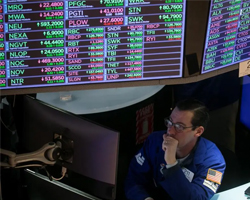Stock Market Dips as Walmart’s Outlook Sparks Consumer Concerns | Daily Market Analysis

Key events:
- USA - S&P Global Manufacturing PMI (Feb)
- USA - S&P Global Services PMI (Feb)
- USA - Existing Home Sales (Jan)
The S&P 500 closed lower on Thursday as a weaker-than-expected sales forecast from Walmart raised concerns about consumer spending and the broader economy.
The S&P 500 was down 0.4% at market close, the Nasdaq Composite slipped 0.5%, and the Dow Jones Industrial Average tumbled 450 points, or 1%. Walmart shares fell more than 6% after the retail giant projected annual sales growth of 3% to 4% for its 2026 fiscal year, below analysts' expectations of a 4% rise. This softer outlook signaled that even dominant retailers might feel the impact of fading consumer confidence amid persistent inflationary pressures.
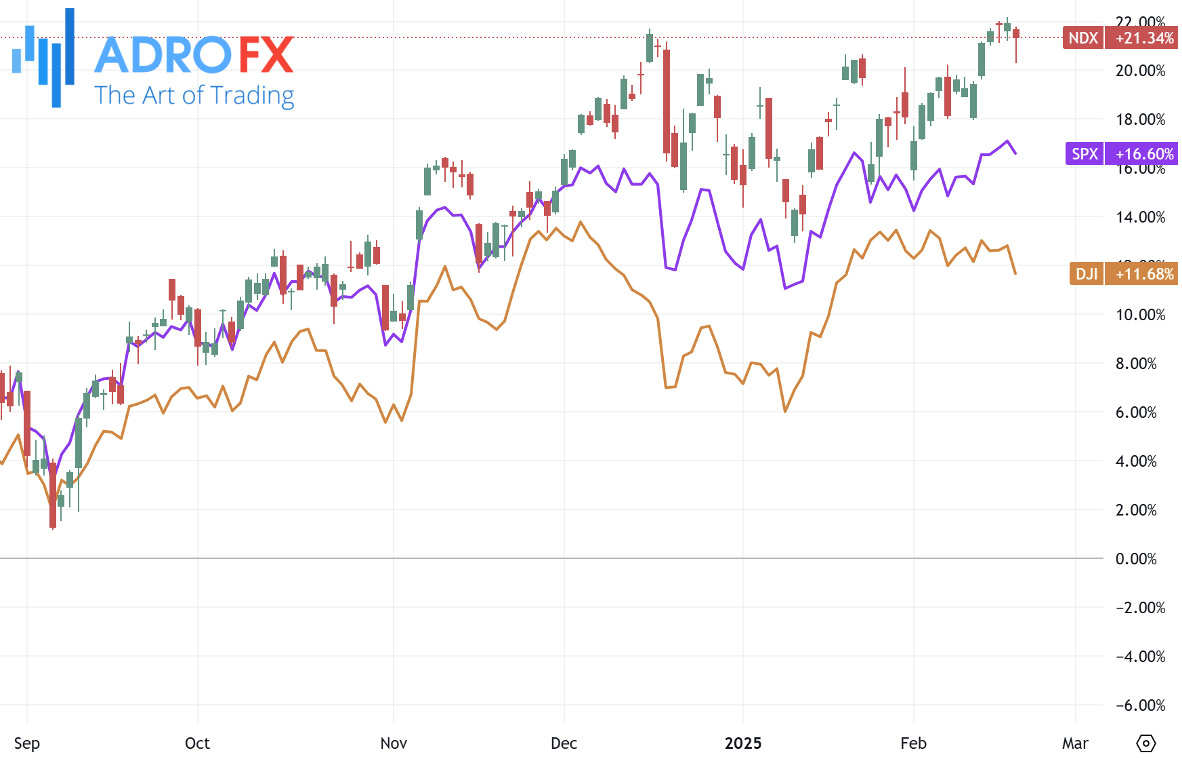
Walmart, often regarded as a barometer of US consumer strength, has historically provided insight into spending trends. Its cautious forecast suggests that high living costs and economic uncertainty could weigh on household budgets going forward. Despite the negative sentiment, analysts at Truist Securities suggested the selloff in Walmart stock could present a buying opportunity, citing improving profit margins and potential market share gains. However, the downbeat guidance sent ripples through the retail sector, with shares of Target and Costco also trading lower.
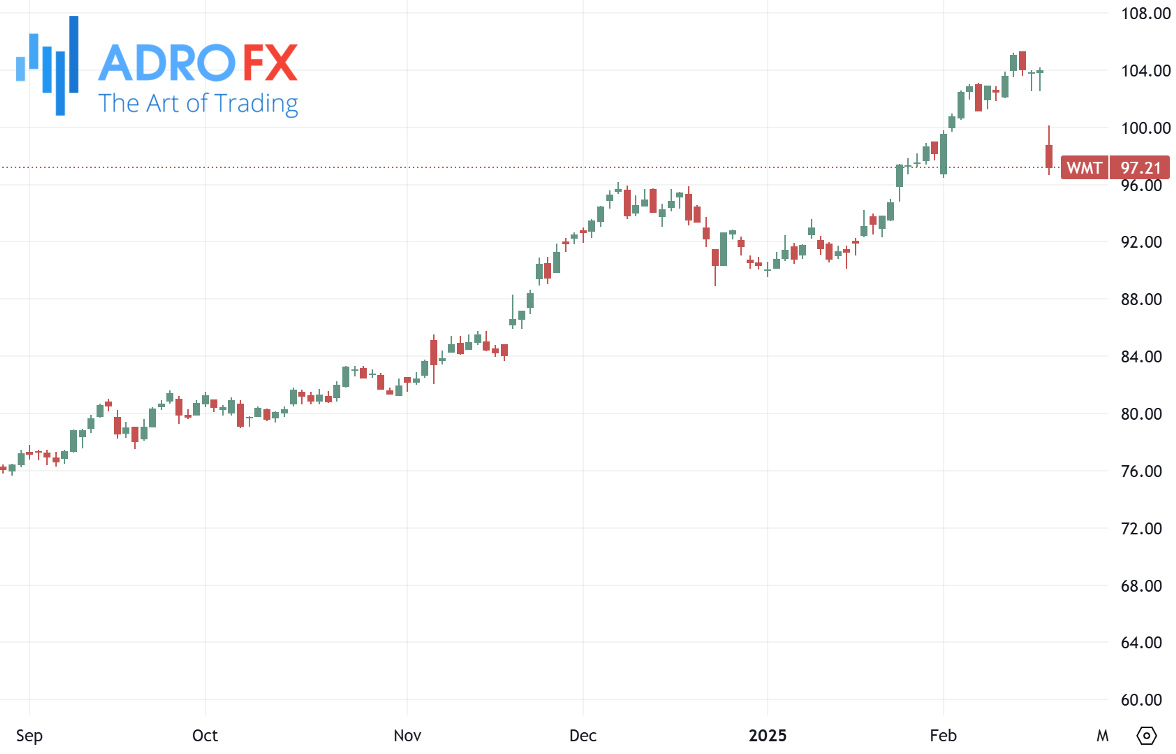
In currency markets, NZD/USD gave up some of its previous session’s nearly 1% gains, slipping to around 0.5760 during Asian trading hours. The New Zealand Dollar weakened after domestic trade data revealed a return to deficit in January. New Zealand posted a trade shortfall of NZD 486 million, reversing December’s revised surplus of NZD 94 million. Exports declined to NZD 6.19 billion from NZD 6.67 billion, while imports increased to NZD 6.8 billion from NZD 6.62 billion. The data underscored the challenges facing New Zealand's economy, as softening global demand weighed on trade activity.
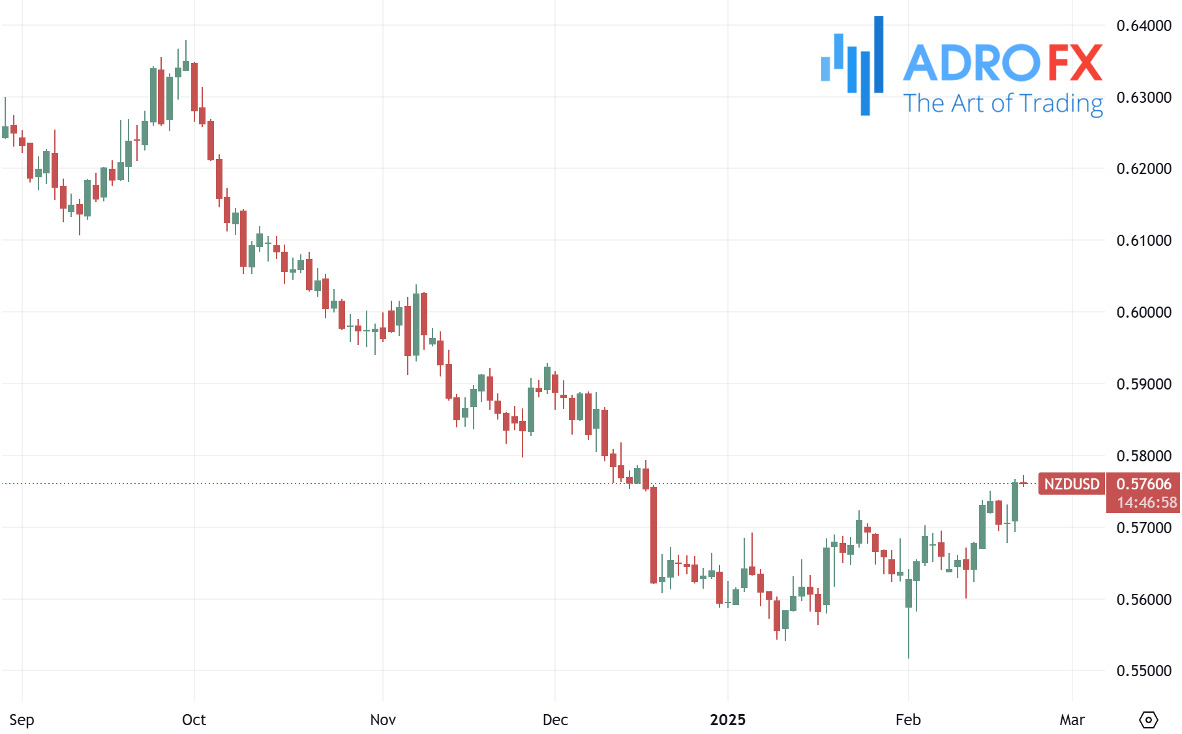
Further pressuring the New Zealand Dollar was the Reserve Bank of New Zealand’s decision to lower interest rates by 50 basis points to 3.75% in its latest policy meeting, a move widely anticipated by markets. RBNZ Chief Economist Paul Conway signaled additional easing ahead, indicating that the Official Cash Rate could see another 75 basis points in cuts. Governor Adrian Orr reinforced this dovish stance, suggesting that policymakers would continue reducing rates to support the economy as inflation moderates. The prospect of further rate cuts weakened the NZD, as lower interest rates diminish the currency’s appeal for yield-seeking investors.
The USD/CHF pair edged higher to 0.8985, supported by a modest rebound in the US Dollar during early European trading. Minutes from the Federal Reserve’s January meeting revealed that officials were reluctant to rush into additional rate cuts, with policymakers emphasizing the need for more evidence of easing inflation before considering further policy adjustments. Fed Chair Jerome Powell reiterated that the central bank remains cautious and is not in a hurry to lower rates, citing uncertainty about the economy’s trajectory. Market expectations now suggest that the Fed may cut interest rates only once in 2025, with a considerable chance of no cuts at all. This relatively hawkish outlook lent support to the US Dollar, providing upward momentum against the Swiss Franc.
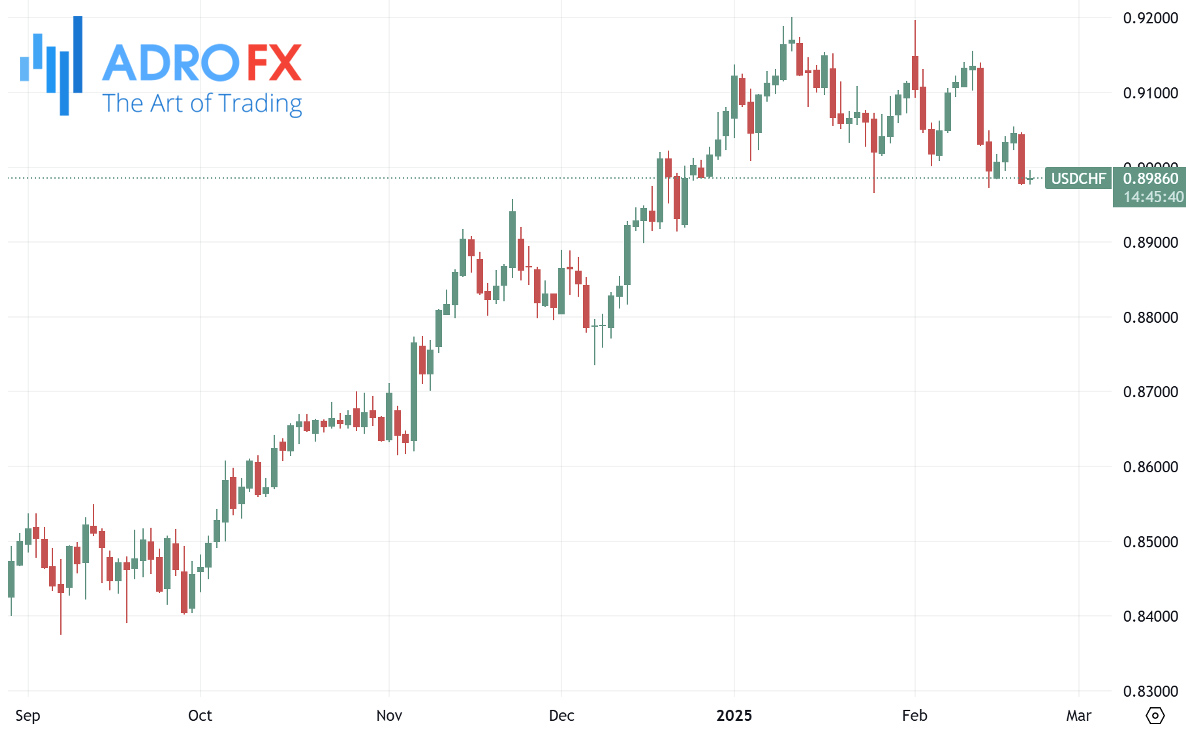
Adding to market uncertainty, President Donald Trump announced plans to introduce new tariffs within the next month, expanding trade restrictions to include lumber and forest products alongside previously announced duties on imported cars, semiconductors, and pharmaceuticals. Rising trade tensions fueled concerns about potential disruptions to global supply chains and inflationary pressures, driving some investors toward safe-haven assets such as the Swiss Franc. Meanwhile, hopes for a ceasefire between Russia and Ukraine dimmed as Ukrainian drone strikes on Russian oil facilities intensified, further boosting demand for traditional safe-haven currencies.
The Australian Dollar weakened against the US Dollar following the release of Judo Bank’s latest Purchasing Managers’ Index (PMI) data. Australia’s manufacturing PMI improved slightly to 50.6 in February from 50.2 in January, while the services PMI rose to 51.4 from 51.2. The composite PMI inched up to 51.2 from 51.1, suggesting marginal growth in economic activity. Despite these modest gains, Reserve Bank of Australia Governor Michele Bullock warned that easing monetary policy too aggressively could derail progress in containing inflation. She emphasized the central bank’s commitment to a cautious, data-driven approach, signaling that while rate cuts remain a possibility, policymakers would tread carefully to prevent inflation from remaining above target levels.
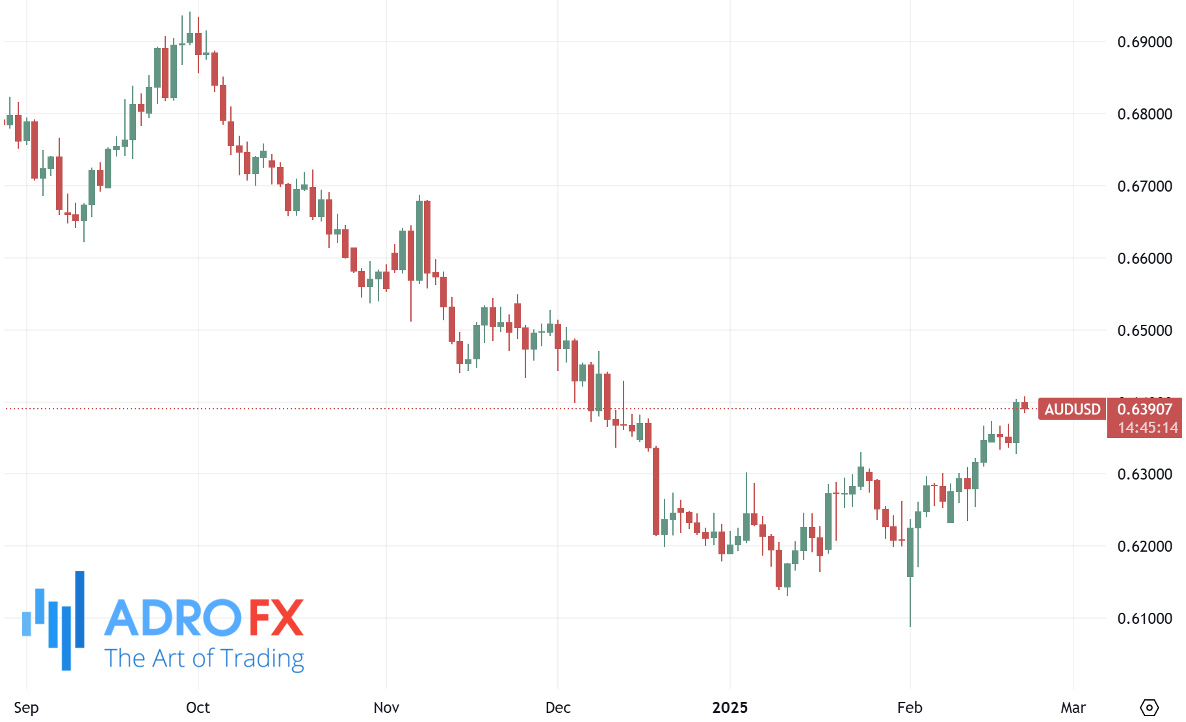
The Japanese Yen trimmed some of its earlier losses but remained under pressure as Japanese policymakers sought to curb rising government bond yields. Finance Minister Katsunobu Kato highlighted concerns over higher long-term interest rates, warning that they could strain Japan’s fiscal situation. Bank of Japan Governor Kazuo Ueda reinforced this sentiment, hinting at potential intervention if bond yields rose excessively. While rising rates typically support the Yen, the government’s emphasis on controlling yields weighed on the currency, overshadowing a stronger-than-expected inflation report. Japan’s National Consumer Price Index climbed to a two-year high of 4.0% year-over-year in January from 3.6% in the previous month, while core CPI, which excludes volatile food prices, increased to 3.2%, marking a 19-month high.
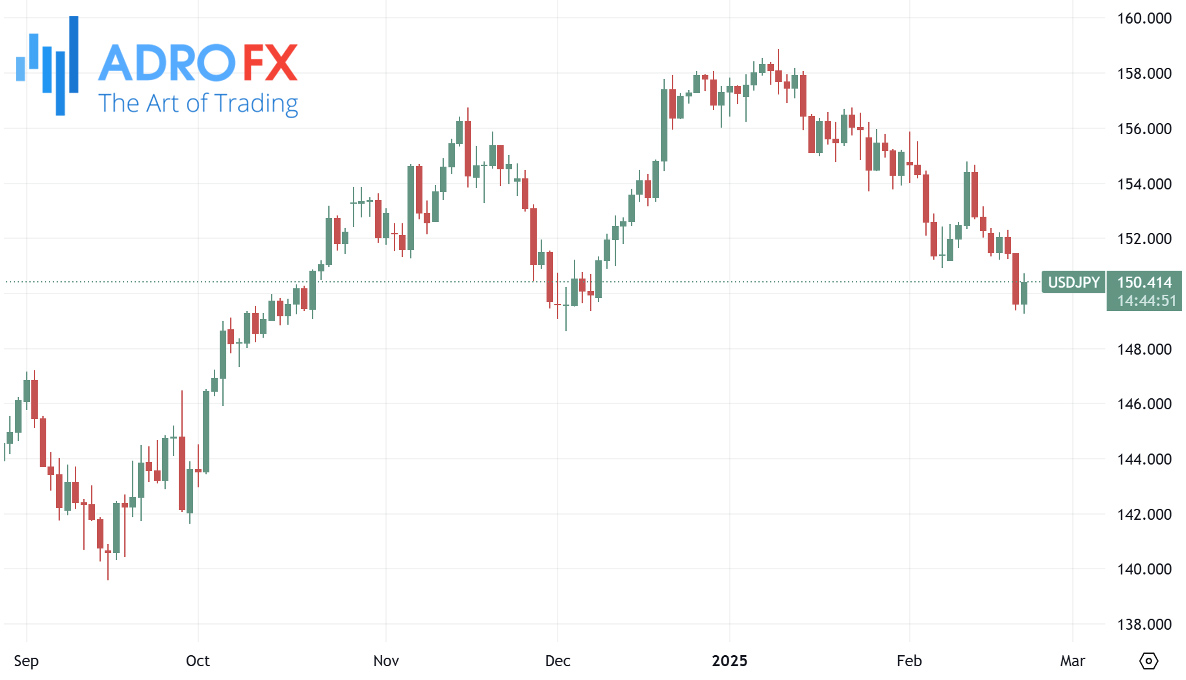
Market participants now turn their attention to key US economic data releases, including flash PMIs, existing home sales figures, and the revised Michigan Consumer Sentiment Index. These reports, coupled with scheduled speeches from Federal Reserve officials, could influence US Dollar movements and impact risk sentiment in global markets.
